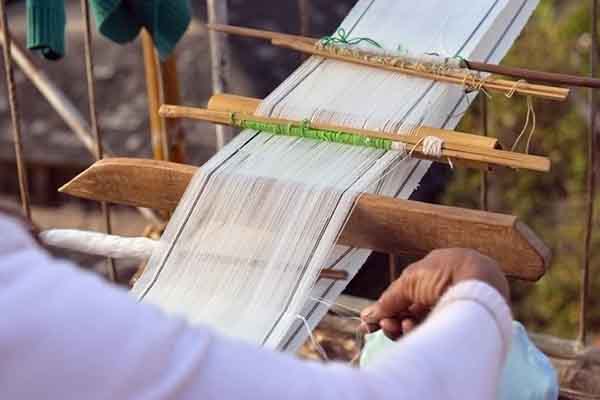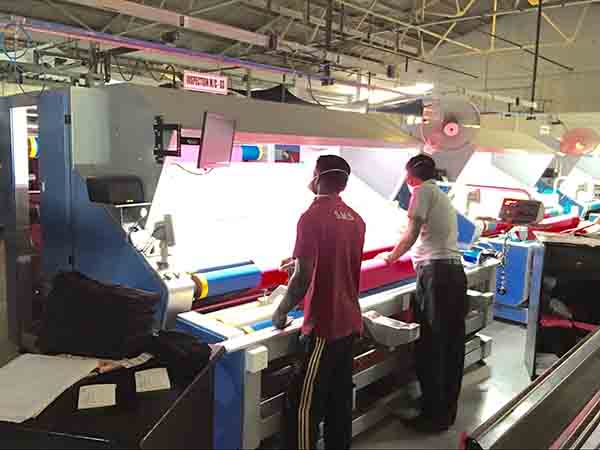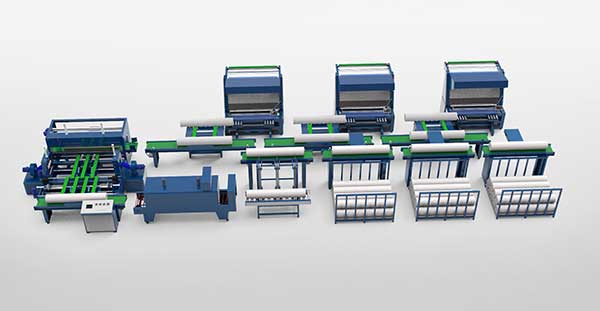From 2020 to 2021, the world will be affected by the new crown pneumonia virus epidemic. Europe and the United States are particularly serious, falling into prolonged suspension of work and production, and some textile business orders are transferred to China, which indirectly stimulates the development of China's textile industry. The development of the textile industry is inseparable from textile machinery. With the development of the times, China's textile machinery is gradually entering the stage of intelligence, and manufacturing is gradually turning into "intelligent manufacturing."

Current status of the textile industry
In 2020, the industrial added value of China's textile enterprises fell by 2.6% year-on-year. Among them, the industrial added value of the textile industry increased by 0.7% year-on-year; the industrial added value of the chemical fiber manufacturing industry increased by 2.2% year-on-year; the industrial added value of the textile and apparel and apparel industries decreased by 9.0% year-on-year. Driven by the demand for anti-epidemic materials, the industrial added value of industrial textile companies in 2020 will increase by 54.1% year-on-year, and the output of non-woven fabrics will increase by 15.8% year-on-year.
Since August, with the continuous improvement of consumer market demand in major overseas developed economies, China's garment exports have resumed positive monthly growth for the first time this year. At the same time, the relatively stable industrial chain and supply chain of the domestic textile industry have also attracted some overseas orders to return. From September to November 2020, the growth rate of apparel exports remained above 6% for three consecutive months. At the end of 2020, the epidemic in Europe and the United States has rebounded and intensified again. Many countries have adopted strict prevention and control measures. The retail market consumption has been frustrated. In December, China’s clothing exports were US$13.91 billion, a year-on-year increase of 2.8% (in RMB, a year-on-year decrease of 3.6%), but compared with the previous month The growth rate dropped by 4.1 percentage points.
.jpg)
From January to May of 2021, the industrial added value of enterprises above designated size in China's industrial textile industry fell by 11.9% year-on-year, but if the epidemic factor is removed, the industrial added value of the industry will still increase by an average of 15.2% in two years. The operating income of enterprises above designated size in the industry reached 117.51 billion yuan, a year-on-year increase of 0.3%, and the total profit was 7.02 billion yuan, a year-on-year decrease of 54.5%. The profit rate was 6.0%, a year-on-year decrease of 7.2 percentage points. Although the growth rate of the industry's operating income and total profit has dropped significantly, the profitability is still in a relatively ideal state compared to the same period in history, and is only lower than that of chemical fiber and textile machinery in the current textile industry.
.jpg)
In terms of cost, the surveyed companies generally reported that the prices of raw materials in the first half of the year have changed significantly, and the industry's raw material price index is 77.1, which is in a fast-rising range. The accounts receivable of enterprises also showed a substantial increase. From January to May, the accounts receivable of enterprises above the designated size in the industry increased by 21.8%, which was much higher than the income growth. The labor cost of enterprises continues to grow, but the growth rate is moderate. Two-thirds of the enterprises said that the labor cost in the first half of the year increased, and 27% of the enterprises said that the increase was more than 10%.
It can be seen that China's textile industry still maintains high-speed growth, and there is huge room for future development, but it is currently encountering some bottlenecks, and the continuous growth of labor costs will become a stumbling block. The technological development, process improvement and intelligent improvement of textile machinery will become a breakthrough in the textile industry. The development of intelligent machinery will greatly increase production efficiency and reduce labor costs. The cost problem of the textile industry will be solved.
As an old textile machinery company, Suntech has integrated textile machinery technology into intelligent equipment research and development after 50 years of technological precipitation and experience summarization. The design and production of intelligent looms, cloth inspection machines, packaging machines, cloth inspection and packaging lines and other equipment are internationally It enjoys a high reputation, full of word of mouth, and a high return rate.
.jpg)
Follow-up link of textile production and processing
After the textiles are produced, the most important thing is cloth inspection and packaging, which are important links related to textile quality and brand value-added. Since many textiles have defects after they are produced, and the number of defects determines the grade and quality of the textiles, which in turn affects the brand reputation and price, the fabric inspection is indispensable. Cloth inspection machines have gradually replaced manual inspections with the advantages of high efficiency and low error rate, and have a place in the textile industry.
Although textiles that have undergone fabric inspection can be regarded as qualified products, they cannot be regarded as commodities. The important part of becoming a commodity is packaging. People rely on clothing, and beauty depends on packaging. The packaging machine not only makes textiles more compact and reduces the footprint, but also can beautify the look and feel, so that the textiles have a better appearance.

Traditional textile inspection generally uses manual inspection, but manual inspection has many problems:
1. The speed is slow, the output is low, and the efficiency is poor. Generally, the inspector can only detect about 200 defects per hour. If it exceeds this range, it is prone to miss inspection and misjudgment.
2. High requirements for inspectors. Long-term concentrated vision can easily lead to eye fatigue, occupational diseases, and low labor intensity.
3. The error is high. Manual inspection of cloth is restricted by the inspector's subjective consciousness, personality, environment, cognition and other factors, and the consistency of the inspection results is poor.
4. Consume labor. The labor cost of traditional cloth inspection is relatively high.
5. The width is small. Traditional manual inspection of fabrics can only inspect fabrics with a smaller width, which is not suitable for the width requirements of modern looms. If the width is expanded and reformed, it is necessary to reduce the speed and increase the load of the inspection work.(try suntech fabric inspection machine)

Suntech's intelligent cloth inspection and packaging line overcomes the shortcomings of manual cloth inspection, integrates cloth inspection and packaging, and automatically completes the cloth inspection and packaging process, which is more convenient and has many advantages as follows:
1. Fully automatic. Suntech fabric inspection machine can detect fabric defects in online or offline conditions, determine the location of the defects, classify and score the defects according to their size, hazard, and degree of impact, and issue alarms for serious defects or implement measures such as shutting down or opening and cutting.
2. Suitable for all kinds of fabrics. The Suntech fabric inspection machine can detect the basic structure and change structure of fabrics, including cotton, linen, silk, wool, chemical fiber and blended yarn fabrics and other fabric materials.
3. High pass rate. The production volume of Suntech cloth inspection system equipment is significantly higher than that of manual cloth inspection, or even several times higher. The accuracy rate of automatic cloth inspection fabric defect detection reaches more than 95%, which is much higher than manual cloth inspection, missed detection rate and error The judgment rate is less than 5%, which is much lower than manual cloth inspection.
4.Fast speed, adjustable speed. The production speed of Suntech automatic fabric inspection is generally above 120m/min, and the highest can reach 300m/min. The inspection speed can be adjusted according to the needs. The actual inspection speed is related to the machine width and defects.
5.Automatic length check. Suntech cloth inspecting machine is equipped with a length counting device, and it can also check the length of sewing material at the same time. The traditional manual inspection of cloth requires visual inspection of whether there are defects on the surface of the sewing material. If there are defects such as yarn defects, weaving defects, stains or color differences, immediately mark the edges of the sewing material for repair or removal. Suntech fabric inspection machine saves these troubles.

Suntech, as an old-brand fabric inspection machine manufacturer, has 50 years of technical precipitation and equipment manufacturing experience.
With more than 4,500 customers and 10,000 machine installation cases around the world, it specializes in the production of cloth inspection machines and cloth inspection packaging lines (including cloth inspection machines and packaging machines). Manual, semi-automatic and automatic cloth inspection machines can be customized according to user needs. 13-month warranty and free accessories such as optoelectronics, digital length meter, etc. are welcome to inquire.





